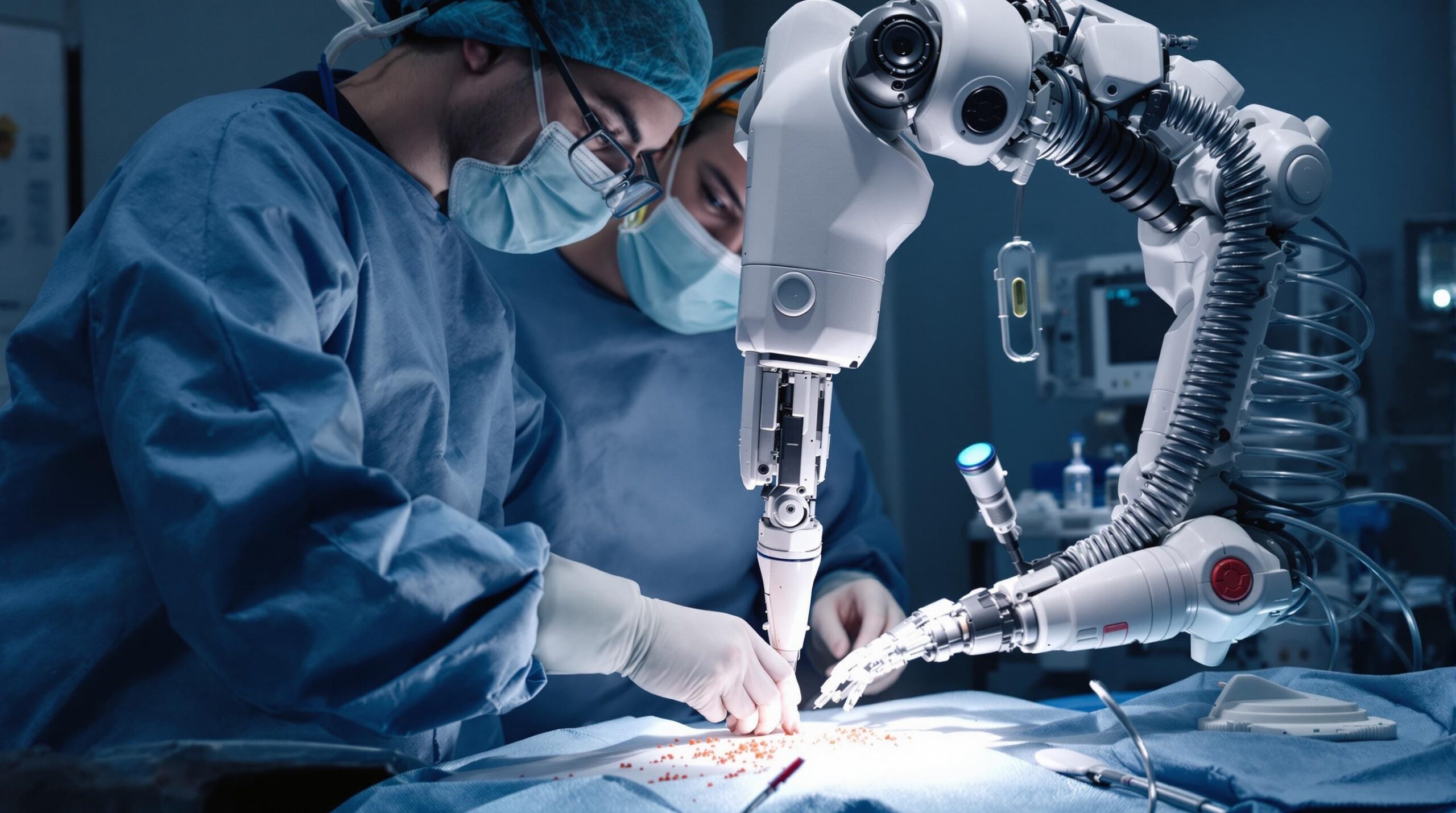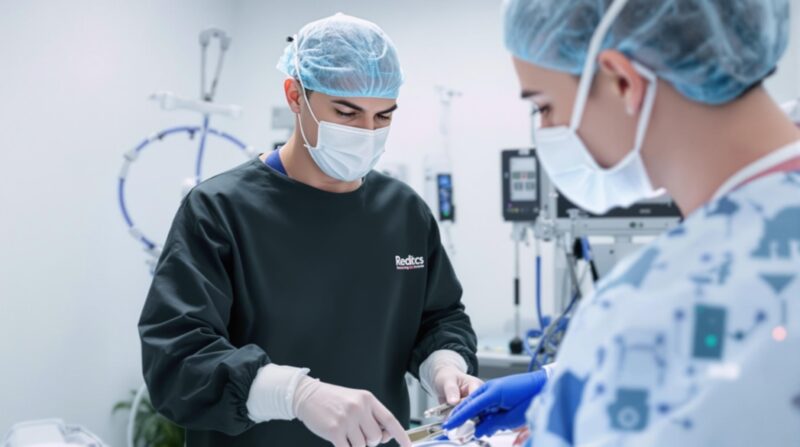Surgical robots have revolutionized modern healthcare by enhancing precision, safety, and patient outcomes in ways traditional surgery cannot match. The Advantages of Surgical Robots extend beyond technical capabilities to include meaningful improvements in recovery times, reduced complications, and enhanced surgical performance across multiple specialties.
Key Takeaways
- Robotic systems provide sub-millimeter precision and eliminate natural hand tremors, reducing collateral tissue damage by 30-40%
- Enhanced 3D visualization offers up to 10x magnification of surgical sites, improving nerve preservation by 15-20% in procedures like prostatectomies
- Patients experience 50% less blood loss during robotic procedures and 52% lower surgical site infection rates
- Hospital stays are reduced by 20% on average, with patients returning to normal activities two weeks sooner
- Healthcare systems benefit from $2,400 cost savings per patient and 22-36% increased surgical productivity
The Rise of Robotic Surgery in Modern Medicine
Robotic surgery represents the perfect marriage between cutting-edge technology and surgical expertise. These systems are rapidly changing how doctors approach complex procedures, with the global surgical robot market projected to grow at 9.42% annually, reaching $7.42 billion by 2030. This growth isn’t surprising given the clear benefits these platforms provide.
The impact of robotic surgery spans multiple specialties including urology, gynecology, and orthopedics. The da Vinci system, one of the most widely used platforms, has over 6,730 units deployed globally, performing approximately 1.5 million procedures each year. As these numbers continue to grow, more patients benefit from the improved outcomes that robotic surgical trends are delivering.

Unmatched Precision and Tremor Elimination
One of the most significant advantages of robotic surgical systems is their ability to operate with sub-millimeter precision. The da Vinci Xi system enables surgeons to perform maneuvers far more accurately than is possible with human hands alone. This precision isn’t just impressive—it’s life-changing for patients.
The articulated instruments used in robotic surgery replicate natural wrist movements while automatically filtering out unintended tremors. This results in a 30-40% reduction in collateral tissue damage compared to traditional surgical methods. With high-definition 3D cameras providing magnified views of surgical sites—enhancing anatomical clarity by up to 10x—surgeons can see details that might otherwise be missed.
Robotic arms offer 360-degree rotation capabilities, allowing access to confined areas with greater ease than traditional laparoscopic tools. After mastering the platform, surgeons typically experience a 25% reduction in operative time for complex cases, further improving efficiency and patient outcomes.
Enhanced Visualization and Critical Structure Preservation
The 3D visualization provided by robotic systems offers superior anatomical clarity during procedures. For prostatectomies, this visual advantage translates to a 15-20% improvement in nerve preservation—critical for maintaining urinary and sexual function post-surgery.
Surgeons benefit from ergonomic consoles that minimize fatigue during lengthy operations. This improved comfort translates to better performance throughout complex procedures. The overall 95% success rate of robotic procedures underscores their reliability in achieving intended clinical outcomes across different surgical specialties.
By integrating AI-powered robotics with surgical expertise, doctors can now visualize and preserve structures that were previously at high risk during conventional procedures.
Reduced Blood Loss and Lower Infection Rates
The precision of robotic instruments significantly reduces intraoperative blood loss—by approximately 50% in major procedures like cystectomies and hysterectomies. In bladder cancer surgery specifically, robotic approaches decrease transfusion requirements by 35% compared to open techniques, mitigating risks associated with blood product administration.
Minimally invasive incisions—often under 1 cm—lower surgical site infection rates by a remarkable 52% compared to traditional open approaches. This dramatic reduction in infection risk represents one of the most important safety advantages of robotic surgery for patients.
These benefits combine to create a safer surgical experience with fewer complications, directly impacting patient recovery and hospital resource utilization.
Lower Complication Rates and Improved Survival
Clinical studies continue to demonstrate the safety benefits of robotic surgery. A UCL trial found that robotic approaches cut deep vein thrombosis risk by 77% due to shorter immobilization periods. Readmission rates within 90 days drop significantly—21% for robotic surgery versus 32% for open surgery.
For cancer patients, robotic resection margins are 20% wider on average, correlating with a 12% increase in 5-year survival rates for colorectal and prostate cancers. The precision of these systems allows surgeons to remove tumors more completely while preserving surrounding healthy tissue.
Joint replacement patients experience a 33% reduction in readmissions when robotics are used. This demonstrates how intelligent machines are transforming not just the surgical procedure itself but the entire patient journey.
Accelerated Recovery and Reduced Hospital Stays
Patients undergoing robot-assisted bladder removal spend 20% fewer days hospitalized (8 vs. 10 days) compared to traditional approaches. Robotic knee replacement patients resume walking 40% faster than conventional surgery patients, dramatically improving quality of life during recovery.
The benefits extend to pain management as well, with several key improvements noted across procedures:
- Reduced opioid use—down by 30%—accelerating rehabilitation milestones
- Postoperative pain scores dropping by 50% in robotic colectomy patients
- Patients returning to normal activities in 4.5 weeks versus 6.5 weeks for open surgery
- Wearable sensor data confirming a 25% increase in daily step counts during recovery
These recovery improvements translate to tangible quality-of-life benefits for patients and their families, allowing faster returns to work and normal activities.
Economic Benefits for Healthcare Systems
Despite the initial investment required for robotic systems, healthcare institutions often see positive economic returns. Robotic approaches cut 90-day care costs by $2,400 per patient in joint replacements, representing significant savings across a surgical program.
Hospitals report a 22-36% increase in surgical productivity due to faster turnover between cases, helping to offset the initial platform investments of $1-2 million. Lower readmission rates contribute additional cost savings while shorter hospitalization times free up valuable bed capacity.
The improved resource utilization creates a positive economic case for robotic surgery adoption, even accounting for the upfront technology costs. As systems become more widespread, economies of scale will likely improve these economics further.
The Future of Robotic Surgery
The field of robotic surgery continues to evolve rapidly, with ongoing technological advancements improving surgical outcomes. Applications are expanding across more specialties, bringing these benefits to a wider range of patients.
Integration with AI and machine learning promises further refinements in technique, with systems potentially offering real-time guidance and anatomical identification. Training programs are developing to ensure surgeon proficiency, standardizing the learning curve and improving patient safety.
Perhaps most exciting is the potential for remote surgery applications in underserved regions, potentially democratizing access to expert surgical care regardless of geography. The increasing adoption rates of robotic platforms demonstrate growing confidence in their ability to improve patient outcomes across the healthcare spectrum.











